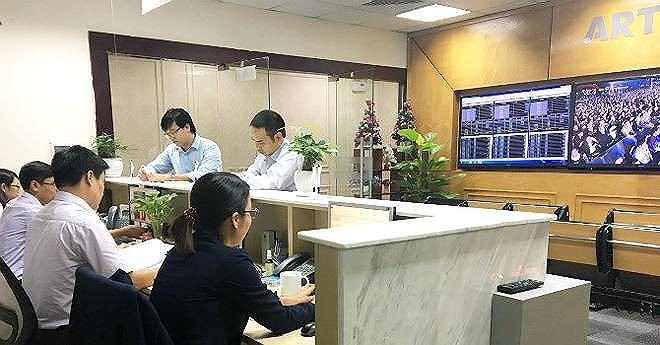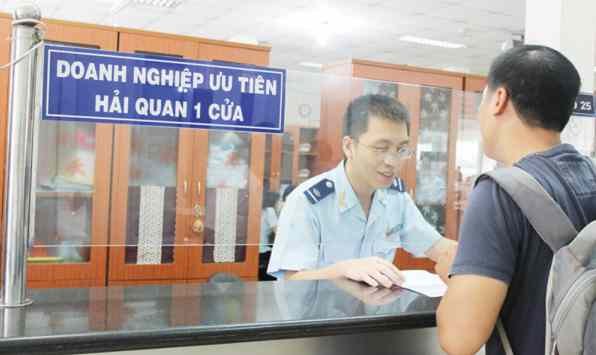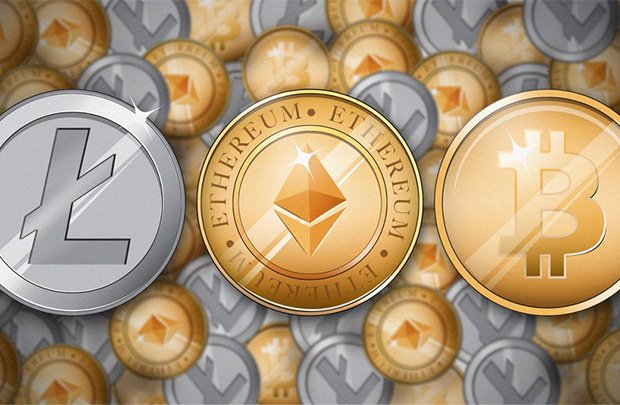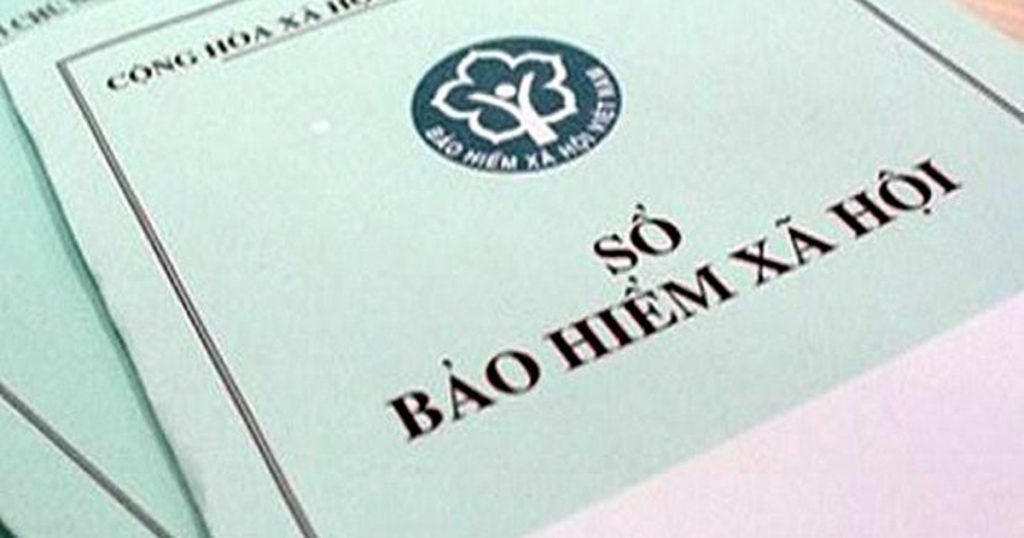Value Added Tax (VAT) is the type of tax that applies to most goods and services. The following article will help Customers better understand the provisions of the law related to the distribution of input value-added tax for taxable and non-taxable activities.

1. What is value added tax?
Article 2 of the 2008 Law on Value Added Tax is amended and supplemented in 2013, the value added tax is the tax calculated on the added value of goods and services arising in the process from production, circulation to consumption. .
According to the above provision, it can be seen that this is an indirect tax incurred during each stage of production and circulation of goods and products, from the time it is a raw material to a finished product. Finally, the consumption period is paid to the State budget according to the consumption of goods and services. But only calculated on the added value of each period.
The formula for value added tax is calculated as follows:
Payable VAT amount = output VAT – deductible output tax
Value-added tax is borne by the end consumer during the consumption period, the business establishment, the supplier of goods or services, is the taxpayer who enters the budget on behalf of the consumer through adding taxes. to the selling price that consumers have to pay when buying goods or services.
2. Why must pay VAT (Meaning of value added tax):
Provisions on value added tax basis to implement the regime of tax collection and payment. The application of value added tax has contributed to stabilizing prices, expanding goods circulation, contributing to promoting development of production and boosting exports.
Create favorable conditions to combat tax revenue loss with high efficiency. The deduction of value added tax is made based on the purchase invoice that motivated the buyer to ask the seller to issue the invoice and record the turnover in accordance with the purchase and sale activities; overcome collusion between buyers and sellers to evade taxes.
Improving self-awareness in fulfilling taxpayers’ obligations, limiting tax losses.
Strengthening the deduction of input and output VAT, and promoting the purchase and sale of goods and vouchers.
The deduction of taxes paid at the input also encourages the modernization and specialization of production, increasing investment in the purchase of new equipment to lower production costs.
Value-added tax is widely applied in the process of consuming goods and using services, thus creating a large and relatively stable revenue for the state budget.
Export goods not only do not pay value-added tax but also deduct or refund the input value-added tax, thus reducing costs, lowering product costs, boosting exports, create conditions for export goods to compete favorably in the international market.
Value added tax along with import tax increases the cost price of imported goods, has a positive effect on protection of domestic goods production and trading.
3. Who is not subject to value added tax?
Pursuant to Article 4 of the 2008 VAT Law; Article 4 of Circular No. 219/2013 / TT-BTC dated December 31, 2013 of the Ministry of Finance was amended and supplemented under Article 1 of Circular 26/2015 / TT-BTC; Article 8 of Circular 151/2014 / TT-BTC, Article 1 of Circular 130/2016 / TT-BTC and Article 1 of Circular 25/2018 / TT-BTC are subject to value-added tax including goods , services used for production, business and consumption in Vietnam, except for those not subject to tax under the provisions of the current Value-Added Tax Law and its implementing legal documents.
Accordingly, the items not subject to VAT include:
- Products from cultivation, husbandry and aquaculture that are not yet processed into other products or just processed by ordinary organizations, individuals that produce, fish by themselves and sell them. import stage.
- Products are animal breeds and plant varieties, including breeding eggs, breeding animals, seedlings, seeds, sperm, embryos and genetic materials.
- Watering and draining water; plowing and harrowing the land; dredge inland canals and ditches to serve agricultural production; Agricultural product harvest service.
- Salt products are made from sea water, natural rock salt, refined salt and iodized salt.
- Houses under state ownership are sold by the State to current tenants.
- Land use right Transfer.
- Life insurance, student insurance, pet insurance, crop insurance and reinsurance.
- Medical services, veterinary services, including medical examination and treatment, preventive services for humans and pets.
- Public post, telecommunications and internet services universalized under the Government’s programs.
- Services for public hygiene, street and residential drainage; maintenance of zoos, flower gardens, parks, street greenery and public lighting; funeral service.
- Maintenance, repair and construction with capital from people’s contributions, humanitarian aid for cultural and artistic works, public works, infrastructure and houses for social policy beneficiaries.
- Teaching and vocational training in accordance with the law.
- Broadcast radio and television with state budget funds.
- Credit granting services; securities trading; capital transfer; derivative financial services, including interest rate swaps, forward contracts, futures, foreign currency options and options and other derivative financial services as prescribed by law.
- Publishing, importing and distributing newspapers, magazines, specialized bulletins, political books, textbooks, textbooks, legal documents, scientific and technical books, and books printed in ethnic minority languages minorities and pictures, propaganda posters and posters, including in the form of tapes or disks, audio and video records and electronic data; print money.
- Transporting passengers by public transport by bus or tram.
- Specialized weapons and equipment in service of national defense and security.
- Imported goods in cases of humanitarian aid, non-refundable aid; gifts for state agencies, political organizations, socio-political organizations, socio-political-professional organizations, social organizations, socio-professional organizations, people’s armed forces units ; presents and gifts for individuals in Vietnam at the levels prescribed by the Government; utensils of foreign organizations and individuals according to diplomatic immunity standards; Carry-on luggage in duty-free luggage.
- Machinery, equipment and supplies which cannot be produced at home and need to be imported for direct use in scientific research and technological development activities; machinery, equipment, spare parts, specialized means of transport and supplies which cannot be produced at home and need to be imported to conduct oil and gas prospection, exploration and development activities; aircraft, drilling platforms and ships which cannot be produced at home and need to be imported to create fixed assets of enterprises, leased from foreign countries for production, business and for lease.
- Goods and services sold to foreign organizations and individuals and international organizations for humanitarian and non-refundable aid to Vietnam.
- Technology transfer under the current Technology Transfer Law; transfer of intellectual property rights in accordance with the current Intellectual Property Law; software.
- Goods transported across borders or transited through Vietnam; goods temporarily imported for re-export; goods temporarily exported and re-imported; raw materials imported for production and processing of exported goods under production or export processing contracts signed with foreign parties; types of goods and services traded between foreign countries and non-tariff areas and between non-tariff areas.
- Software products and software services are not subject to VAT.
According to Clause 21, Article 4 of Circular No. 219/2013 / TT-BTC dated December 31, 2013 of the Ministry of Finance guiding subjects not subject to VAT, “computer software includes software products and software services according to provisions of law”.
Software products are understood as software and accompanying documents which are produced and displayed or stored in any form of objects, which can be traded or transferred to others to exploit and use. use. Software services are activities that directly support the production, installation, exploitation, use, upgrading, warranty, maintenance of software and other similar activities related to software. software.
- Imported gold in the form of ingots or pieces has not been processed into fine art articles, jewelry or other products.
- Artificial products used to replace patients’ body parts; crutches, wheelchairs and other specialized tools for the disabled.
- Goods not subject to VAT, services of business individuals have a monthly average income lower than the common minimum wage applicable to domestic organizations and enterprises.
- Exported products are unprocessed exploited natural resources and minerals as prescribed by the Government.
- Organizations and individuals that produce, trade in, import goods and / or provide services not subject to value added tax may not deduct or refund the input value added tax on goods and services in The stage is not subject to VAT.
4. Subjects of value added tax payment according to law provisions
Article 3 of the 2008 VAT Law, amended and supplemented in 2013, stipulates that “Goods and services used for production, business and consumption in Vietnam are subject to VAT, except for those specified in Article 5 of the VAT Law ”.
Value-added taxpayers include organizations and individuals that produce and trade taxable goods and services, and other organizations and individuals that import taxable goods are taxpayers. value added.
Organizations producing and trading in goods and services, including:
- State enterprises;
- Foreign-invested enterprises to which foreign parties participate in business cooperation under the Law on Foreign Investment in Vietnam;
- Foreign companies and foreign organizations doing business in Vietnam are not following the Law on Foreign Investment in Vietnam;
- Private enterprise;
- Limited liability company;
- Joint stock company;
- Cooperative;
- Cooperative group;
- Economic organizations of political organizations, socio-political organizations, social organizations, socio-professional organizations, people’s armed forces units and other non-business organizations and units.
Individuals engaged in goods production and trading and / or service provision, including independent businesspeople, households and individuals working together to jointly produce and produce goods without forming a business legal entity.
5. What are input and output value-added taxes?
Pursuant to the provisions of the Law on Value-Added Tax 2008, Circular No. 219/2013 / TT-BTC:
Input value-added tax is understood as the tax amount stated on the input invoice (red sheet) when buying goods or services of an enterprise.
The output value-added tax is the tax amount stated on the output tax invoice (blue or purple) when an enterprise sells goods or services to its customers.
a. According to the deduction method:
Enterprises (enterprises) with annual turnover from goods sale and service provision of over VND 1 billion (if enterprises have turnover of less than VND 1 billion but voluntarily still) fully implement accounting and invoice regimes. , vouchers (Except for business households and individuals).
Foreign organizations and individuals that supply goods and services to conduct oil and gas prospection, exploration, development and oil exploitation activities shall pay tax by this method as declared by Vietnam for tax deduction and payment instead.
Newly established businesses from enterprise’s investment projects (still in operation).
Foreign organizations and individuals doing business in Vietnam under contracts of contractors and subcontractors.
Formula to calculate input and output VAT:
Payable VAT amount = Output VAT amount – Input VAT amount
Output VAT amount = Taxable price of sold goods or services x VAT rate of such goods and services
Payable VAT amount = (Taxed price of sold goods or services x VAT rate of those goods and services) – Input VAT a
b. By direct method:
Unrealistic individuals, business households and other organizations (economic organizations of political organizations, socio-political organizations, social organizations, people’s armed forces units, non-business organizations, etc.) Present (not fully implement) implement (not implement) fully the regime of accounting, invoices and documents as prescribed by law.
Foreign organizations and individuals doing business not under the Investment Law.
Formula to calculate input and output VAT:
Payable VAT amount = VAT on sold goods or services x Tax rate applicable to goods and services
VAT on sold goods or services = Payment price of sold goods or services – Payment price of purchased goods or services
7. How to allocate input value-added tax for taxable and non-taxable activities
a. Legal grounds:
Legal grounds According to the provisions of Point a, Clause 9, Article 1 of Circular 26/2015 / TT-BTC guiding VAT, tax administration and amending a number of articles on invoices for selling goods and providing services, As follows:
Input VAT on goods and services, including fixed assets used at the same time for producing and trading goods and services subject to and not subject to VAT, is allowed to deduct only the input VAT amount. goods and services used for the production and trading of goods and services subject to VAT.
Establishments trading in goods and / or services subject to VAT and not subject to VAT monthly / quarterly amortize the amount of VAT on goods, services and fixed assets purchased to be deducted in the month or in the quarter or year-end. business establishments shall calculate the distribution of the deductible input VAT amount of the year to make the adjustment of input VAT temporarily deducted monthly or quarterly.
Business establishments must separately account two types: input VAT is deductible and not deductible; If input VAT cannot be separately accounted, input tax may be deducted according to the percentage (%) between the turnover subject to VAT and the turnover not subject to VAT declaration and payment compared to the total turnover of the goods. Services sold include revenue not subject to declaration and calculation of tax, which cannot be separately accounted.
In Clause 2, Article 14 of Circular 219/2013 / TT-BTC prescribing input VAT on goods and services (including fixed assets) used simultaneously for the production and trading of goods and services subject to Input VAT and input VAT on goods not liable to VAT shall be deductible only for input VAT on goods and services used for production and trading of goods and services subject to VAT.
Establishments trading in goods and / or services subject to VAT and not subject to VAT on a monthly basis temporarily allocate VAT amounts of goods, services and fixed assets purchased which are deductible in the month and year-end. The current calculation of the deductible input VAT amount of the year to make the adjustment of input VAT has been temporarily deducted monthly.
Business establishments must separately account the deductible input tax amount and the non-deductible input tax amount; If input VAT cannot be separately accounted, input tax may be deducted based on the percentage (%) of the turnover subject to VAT to the total revenue of goods and services sold that cannot be separately accounted.
If it is possible to separate the VAT amount of the taxable and non-taxable activities: then the enterprise will have to separate these two taxes. The tax amount determined to be used for business activities subject to enterprise tax will be deducted.
The non-deductible input VAT amount used for the production and trading of goods and services not subject to VAT shall be included in the value of assets purchased, prime cost of goods sold or production and business costs. depending on each specific case.
b.1. In case it is not possible to separately account the VAT of taxable and non-taxable activities:
The input VAT amount to be deducted shall be calculated according to the percentage (%) between: Turnover subject to VAT, turnover not subject to declaration and payment of VAT compared to the total turnover of goods or services sold. This includes revenue not subject to declaration and payment of taxes, which cannot be separately accounted.
Inside:
The VAT on input VAT on goods and services used for production and business activities of goods and services subject to VAT shall be deducted in full.
VAT on imported goods and services used for production and business activities of goods and services not subject to VAT is not deducted but included in expenses.
The VAT portion of input goods and services used for the production of goods and services subject to VAT and goods and services not subject to VAT shall be deducted according to the turnover criteria.
Enterprises must determine the amount of input VAT used for activities subject to VAT or used for activities not subject to VAT. If used for activities subject to VAT, this tax amount will be fully deducted, if used for activities not subject to VAT, that portion of tax will not be deducted.
For goods and services purchased simultaneously used for the production and trading of goods and services subject to VAT and not subject to VAT, the enterprise must separately account the deductible input VAT. deduction and accounting of input VAT are not deductible. The tax amount determined to be used for business activities subject to enterprise tax will be deducted.
When an enterprise uses goods or services to serve common business and production activities, it is taxable and not taxable. Except for some exceptional cases, goods and services not serving production and business activities are still entitled to tax deduction, etc. Only the input VAT on the purchased goods and services may be deducted. Production and business activities of goods and services subject to VAT, the rest will not be deducted.
Value-added tax is not deductible as a reasonable expense to calculate corporate income tax, is it correct? According to the Circular of the Ministry of Finance guiding on value-added tax, the principle of deduction of value-added tax is as follows: The non-deductible VAT is included in expenses for calculating corporate income tax or calculation. on the historical cost of fixed assets, except the value-added tax amount on each purchase of goods and services valued at twenty million dong or more, there is no non-cash payment voucher. Therefore, it is understandable that the value-added tax amount of invoices without corporate payment vouchers will not be included in expenses for calculating corporate income tax.
Many customers are still unclear whether VAT-free invoices must be declared? How to declare VAT-free invoice? Customers can refer to how to declare VAT-free invoices here.
*) Allocation of value-added tax shared for taxable activities and not subject to value-added tax according to:
+ Monthly (Or quarterly) – Depending on the monthly declaration period (or quarter) of the enterprise.
Enterprises temporarily allocate VAT amounts of goods and services. (The common goods and services used for taxable and non-taxable goods and service business activities are deductible in the month / quarter.
+ At the end of the year, the enterprise shall calculate the distribution of deductible input VAT of the year. The purpose is to declare the adjustment of input VAT temporarily deducted monthly / quarterly.
*) The general formula of VAT Allocation for Taxable and Non-VAT Contract is as follows:
Therefore, when distributing shared VAT for taxable and non-VATable contracts, attention should be paid to:
The turnover subject to VAT is the turnover of taxable goods sold by the enterprise.
Turnover not subject to VAT declaration and payment is the turnover of entities not subject to VAT declaration and payment.
Total revenue: Includes all types of revenue in the period of the enterprise.
b.2. Input VAT on goods, services and fixed assets shared for taxable activities and not subject to VAT in the period
Only the input VAT of the shared invoice is allocated for both taxable and non-taxable activities. Office rental costs, and the purchase of input materials that have been identified as being used for activities subject to VAT, do not need to be allocated.
Specifically, monthly / quarterly, enterprises temporarily allocate shared VAT amounts for taxable activities and non-VATable activities to be deducted in the month or in the quarter.
By the end of the year, the enterprise must redistribute the deductible input VAT of the year to adjust the input VAT temporarily deducted monthly or quarterly.
c. Note on how to allocate input VAT for taxable and non-taxable activities
Input VAT is not deductible, businesses are allowed to account into the cost to calculate corporate income tax or to calculate the correct cost of fixed assets, minus VAT on goods and services purchased each time. Value of VND 20 million or more without non-cash payment documents.
Any input VAT arising in a period may be declared and deducted when the payable tax amount of that period is determined, regardless of whether it has been exported or left in stock.
Fixed assets include production materials used exclusively in production and business, which are of great value and can be used in many production cycles. According to the provisions of Circular 45/2013 / TT-BTC: assets with unit value of VND 30 million and using period of 1 year or more are eligible as fixed assets.
VAT declaration of enterprises trading in goods and services not subject to VAT requires separate input and output every month; Reallocation by year. Accounting also requires the separation of revenues, expenses, profits of non-taxable and taxable groups.
Therefore, the declaration and making of financial statements, settlement reports are much more complicated, requiring the knowledge and skills necessary to perform the declaration work most effectively.
Above is the guide for Allocation of VAT for activities subject to VAT and not subject to VAT. Please contact us at the hotline for detailed advice.
phapluatdoanhnghiep.vn
















